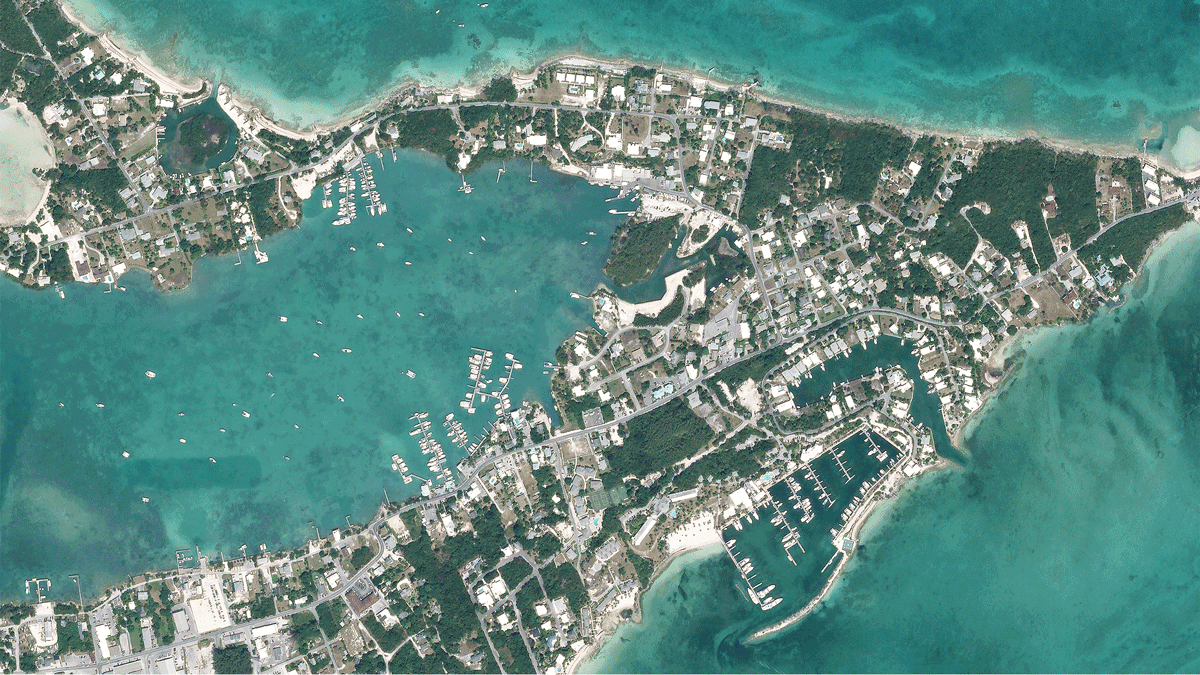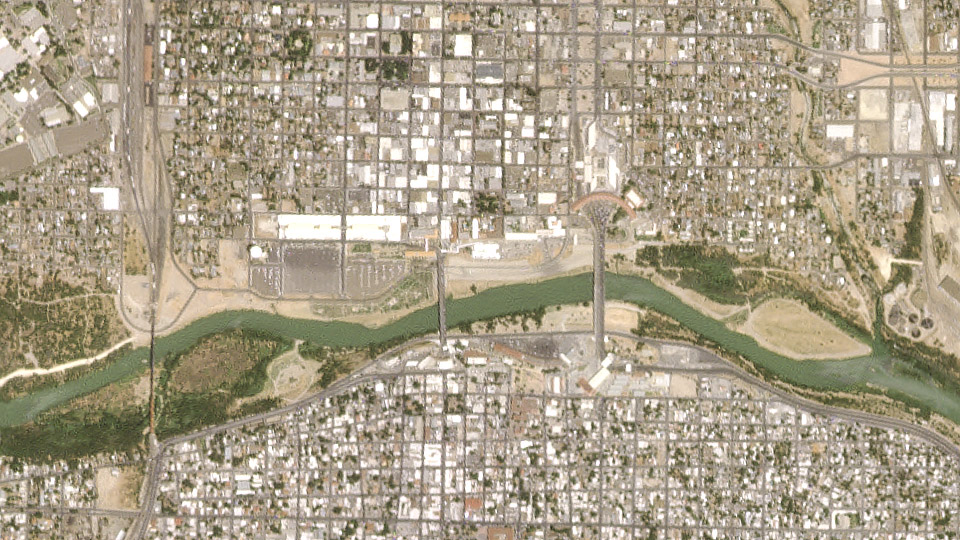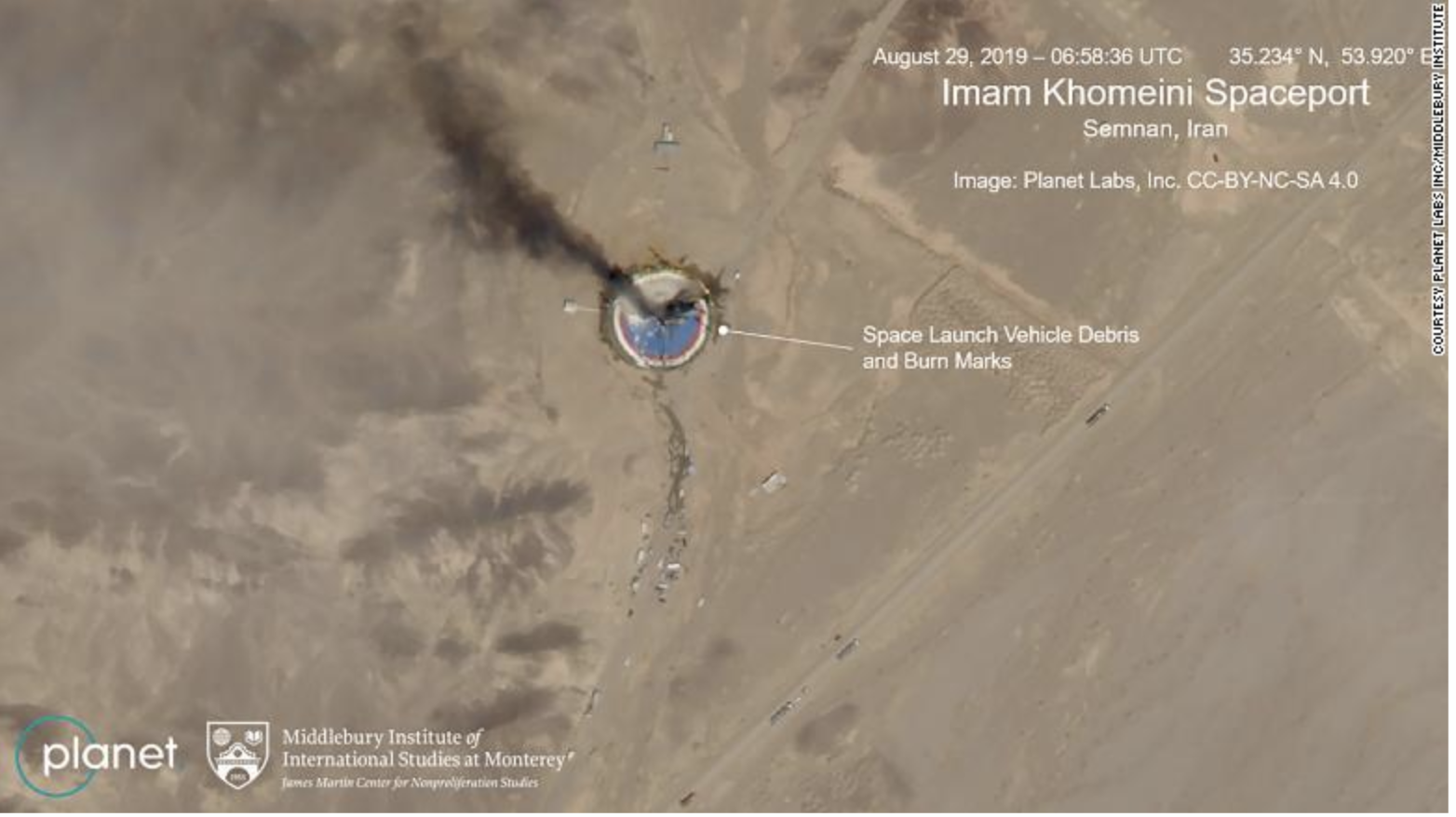Hurricane Dorian, Amazon’s Burning Forests, the Iranian Rocket Launch and More
This summer, media sources have utilized satellite data to help break stories on some arguably heated issues. Here are a few recent instances where journalists took advantage of satellite imagery to keep the public informed.
Dorian Devastation

Planet imagery of Marsh Harbour before and after Hurricane Dorian © 2019, Planet Labs Inc. All Rights Reserved.
Planet satellite imagery has been helping to monitor the devastation in the Bahamas since the country has been struck by Hurricane Dorian—a Category 5 hurricane with 185-mph winds that recently swirled over Grand Bahama for 40 hours. The International Charter for Space and Major Disasters was activated for the Bahamas on September 5th, and Planet is providing data.
Planet imagery has recently shown the devastation of Marsh Harbour’s main harbor on Great Abaco Island, where buildings collapsed, docks were destroyed, and the waters were churned up with sediment, according to the Washington Post. At least 30 were killed in the Bahamas, while efforts for rescue have been hindered by infrastructure damage. Officials said that the final death toll in the Bahamas will be “staggering,” according to BBC.
“This may have been the longest siege of violent, destructive weather ever unleashed on a single location,” the Washington Post reports. Hurricane Dorian also made landfall on the outer banks of North Carolina. The storm spun off two tornadoes, one annihilating a North Carolina RV park and another reeking havoc on South Carolina, leaving piles of wreckage in its wake, the New York Times reports.
Blazing Brazil

Time lapse of fires in Nova Bandeirantes, a municipality in the state of Mato Grosso in the Brazilian Amazon © 2019, Planet Labs Inc. All Rights Reserved.
Recent fires have been destroying much of Brazil’s Amazon rainforest, and satellite imagery has been there to help news organizations track the spread.
Northern states of Rondônia, Amazonas, Acre, and Roraima are getting hit particularly hard, according to BBC, while the border of Bolivia has had much of the country’s savannah and tropical forests devastated.
While many of the photos being shared under the hashtag #PrayforAmazonia are decades old or not even in Brazil, satellite imagery has been used by media outlets to provide a near real-time view of what’s unfolding in the Amazon. Planet data has been shared in the Washington Post, Quartz and international news outlets such as Futura Sciences, Welt and Süeddeutsche Zeitung.
Planet’s data can be mined for insights into what’s happening in the Amazon on a basin-wide scale, says Greg Asner, the director of the Center for Global Discovery and Conservation Science at Arizona State University, whose team has been utilizing our data to analyze the effects of fires on carbon emissions.
“Planet data provides unprecedented detail in mapping forest change down to individual trees which allows us to assess the damage from these kinds of large scale disturbances,” Asner told Mongabay. “Our Planet Incubator Program is currently tracking forest carbon emissions all over the world, including the Amazon, using Planet Dove and SkySat imagery.”
Trump’s Tents

Planet imagery showing Trump’s courthouse tents along the border in Laredo, Texas © 2019, Planet Labs Inc. All Rights Reserved.
More than a dozen of the Trump administration’s new tent courthouses have popped up at two locations along the U.S. border with Mexico, and are acting as temporary courtrooms for migrants who are seeking asylum.
The New York Times used satellite data to pinpoint the locations of the tents and to track expansion over the course of a month, locating them along the border of both Laredo and Brownsville, Texas.
Some of the tents are subdivided into courts where hundreds of asylum hearings are held each day via video conferences. This method of judgement has created concerns among immigration advocates who say that this interview process might negatively impact those seeking asylum, according to the Times.
“It is difficult for judges to analyze eye contact, nonverbal forms of communication, and body language [via video],” a 2017 U.S. Department of Justice study stated. Ken Cuccinelli, USCIS acting director, praised the technology, however, calling the audio and video capabilities “top notch.”
Spotting Smoke

Planet satellite image showing smoke billowing from a launch pad at the Imam Khomeini Space Center in northern Iran, with analysis from Middlebury Institute of International Studies at Monterey © 2019, Planet Labs Inc. All Rights Reserved.
Planet satellite imagery revealed that a rocket seems to have exploded on the launch pad at the Imam Khomeini Space Center in northern Iran. In the days before, Middlebury Institute of International Studies (MIIS) analyzed the imagery to determine that the pad had been newly painted—and that multiple vehicles had surrounded the site in what appears to be preparation for launch.
“This looks like the space launch vehicle blew up on the launch pad,” says Dave Schmerler, a senior research associate at the Middlebury Institute, who analyzed Planet’s imagery to inform an NPR investigation. “This failure happened maybe a couple of minutes before the image was taken.”
The particular kind of rocket that failed is unclear, but what is certain is that Iran had two failed launches already this year in January and February, and there might still be more launch attempts to come. Planet satellites have picked up activity at a second, larger launch pad near where the failure took place, Schmerler told NPR. “We might still get a launch off that pad in the near future.”
Journalists! Planet imagery can be useful for reporters who are investigating important issues. You can sign up for a Planet Explorer account—free for the first two weeks—to unlock the potential for visual and compelling stories.




